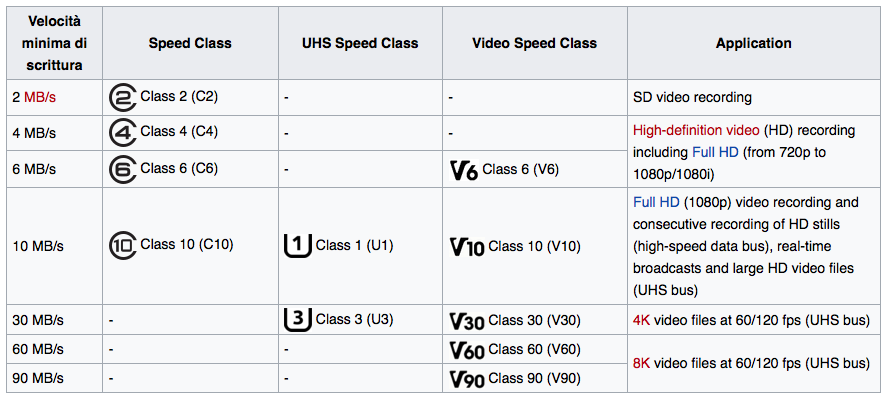DJI Phantom 4 Pro
Flare with the P4Pro:
Some more tests with the Phantom 4 Pro: one major “issue” with this system for stills / photography is imo clearly the flare sensitivity of the lens/sensor combination. The into the sun shots just capture a lot of flare and the sun star is very much Samyang 14mm like. This is an issue and it reduces the image acuity for 3D point cloud modeling for object measurements as well as for the landscape panorama approach.
The against the light shots look very much like the Samyang/Rokinon 14mm lens character. The sunstar has light rays that increase in size from the center and these rays cover the full frame of the 1inch sensor when the illumination comes from one of the outer edges. It clearly degrades the full image when the lens is stopped down to f.e. f8 but gets better when the lens is driven wide open. There seem to be some diffraction effects at work that are clearly not so great. You can drive the camera to generate sharp sun stars, but as usual here the characteristics of this star make a difference to some of us. The Samyang like star is not so well received. The linked flare issue is much more a problem because it is hard to avoid when you have the sun in your frame. For some scenarios a lens hood may be useful but its only functional for those shooting scenarios where the sun is not within your FoV.
To be honest I am bit puzzled … this is the first affordable 1inch sensor platform with nice resolution and better DR, but – the flare issue is likely killing some of the potential ideas that you might develop with this machine.
Some examples:

Above: strong and not so nice flare – even with some distortion in the sun star lines.
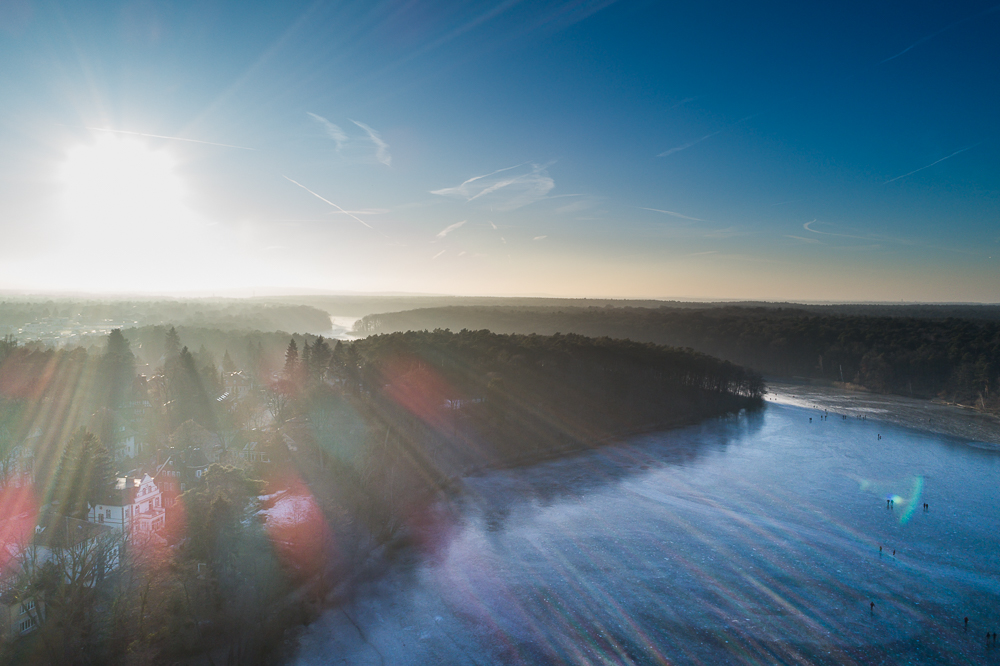
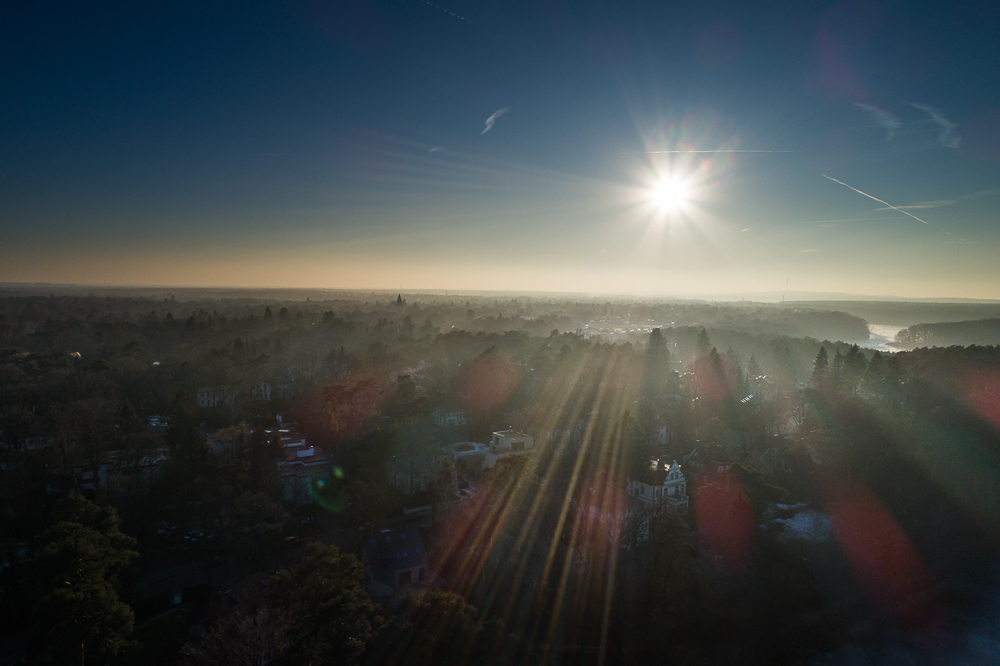
@f4 things get a bit better, but with this image below also the light levels have changed:
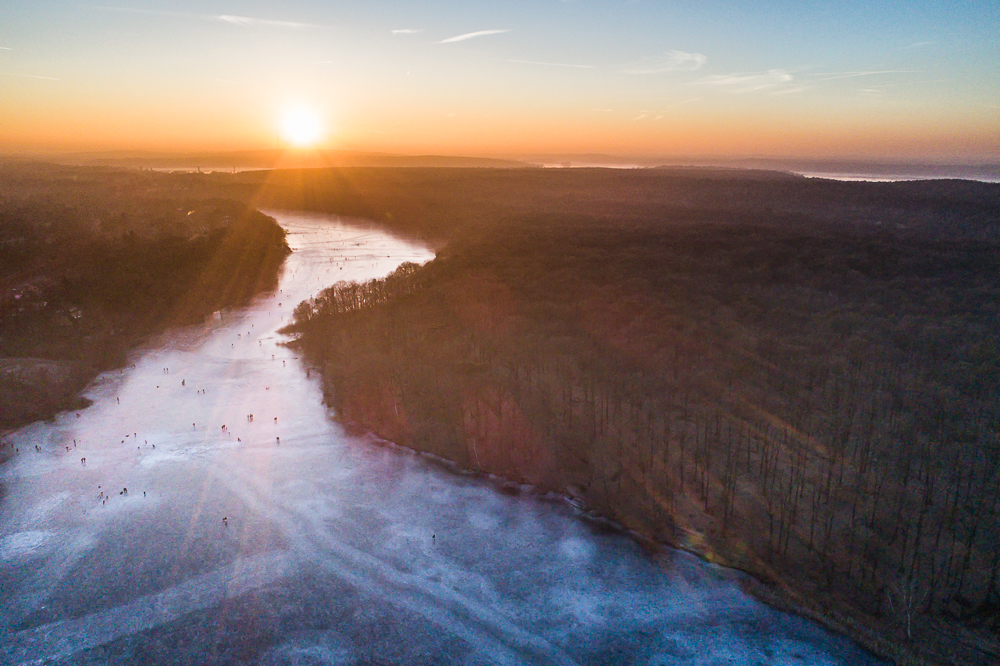
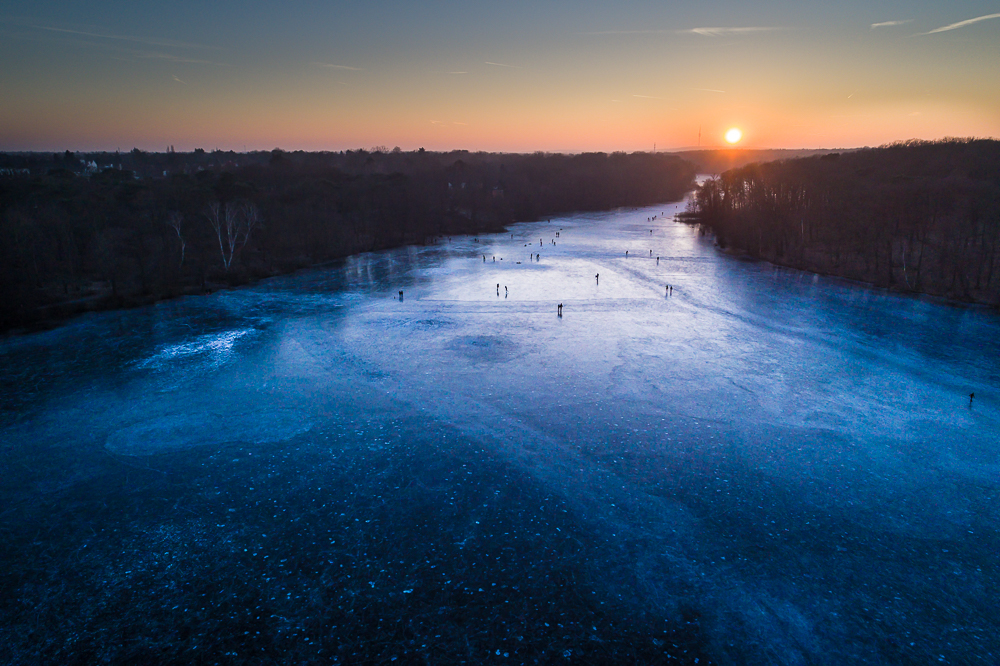
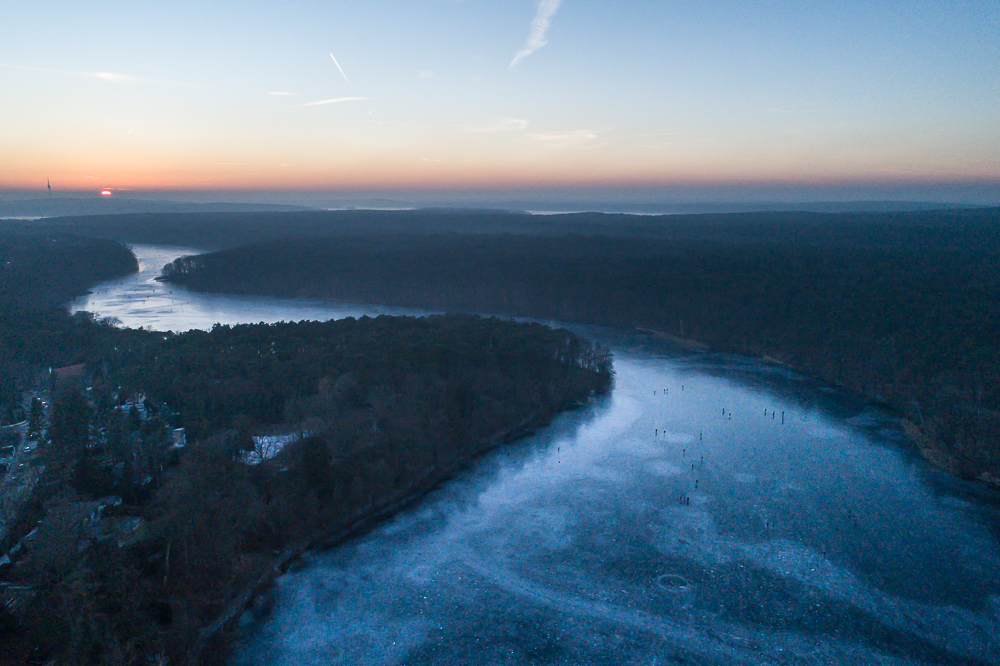
Comparison shot done with the Phantom 3A, clearly shows that the lens/sensor combi wont give the same amount of flare here (again different light level and different sun illumination angle):
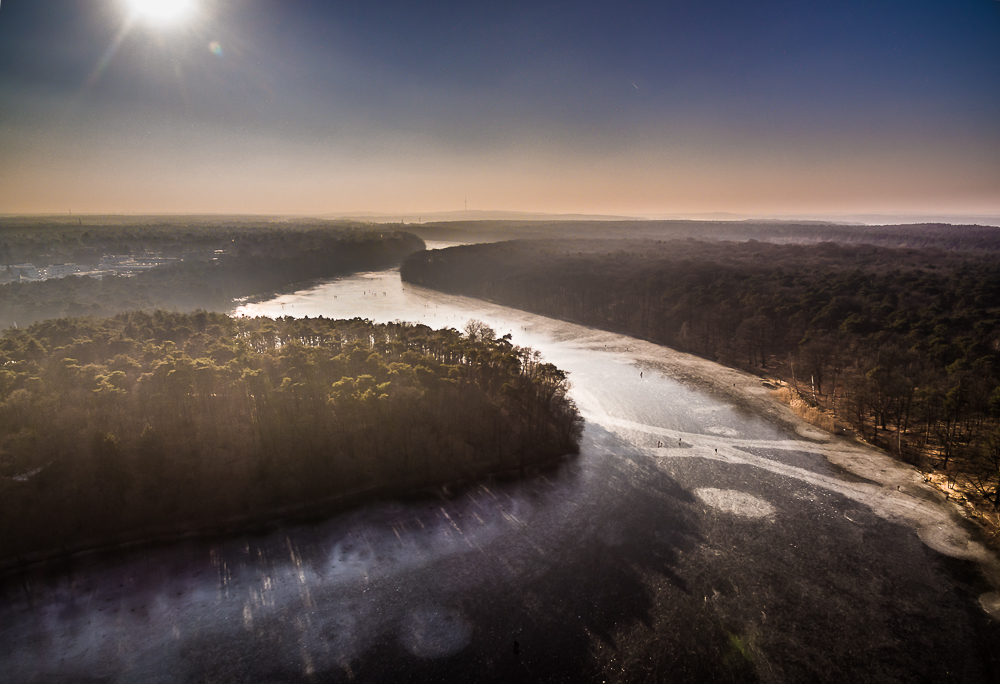
Closing the aperture with the P4Pro:
Closing the aperture will eat some of your acuity advantage away. F11 clearly shows that the lens/sensor combination is in diffraction land. The comparison shot below was taken with ISO200 and ISO800 and here some of the resolution and definition is also lost by noise artefacts but noise reduction is dealing with that successfully imo. Diffraction resolution loss is however clearly visible when you look at some of the details within the high res version of the image below.
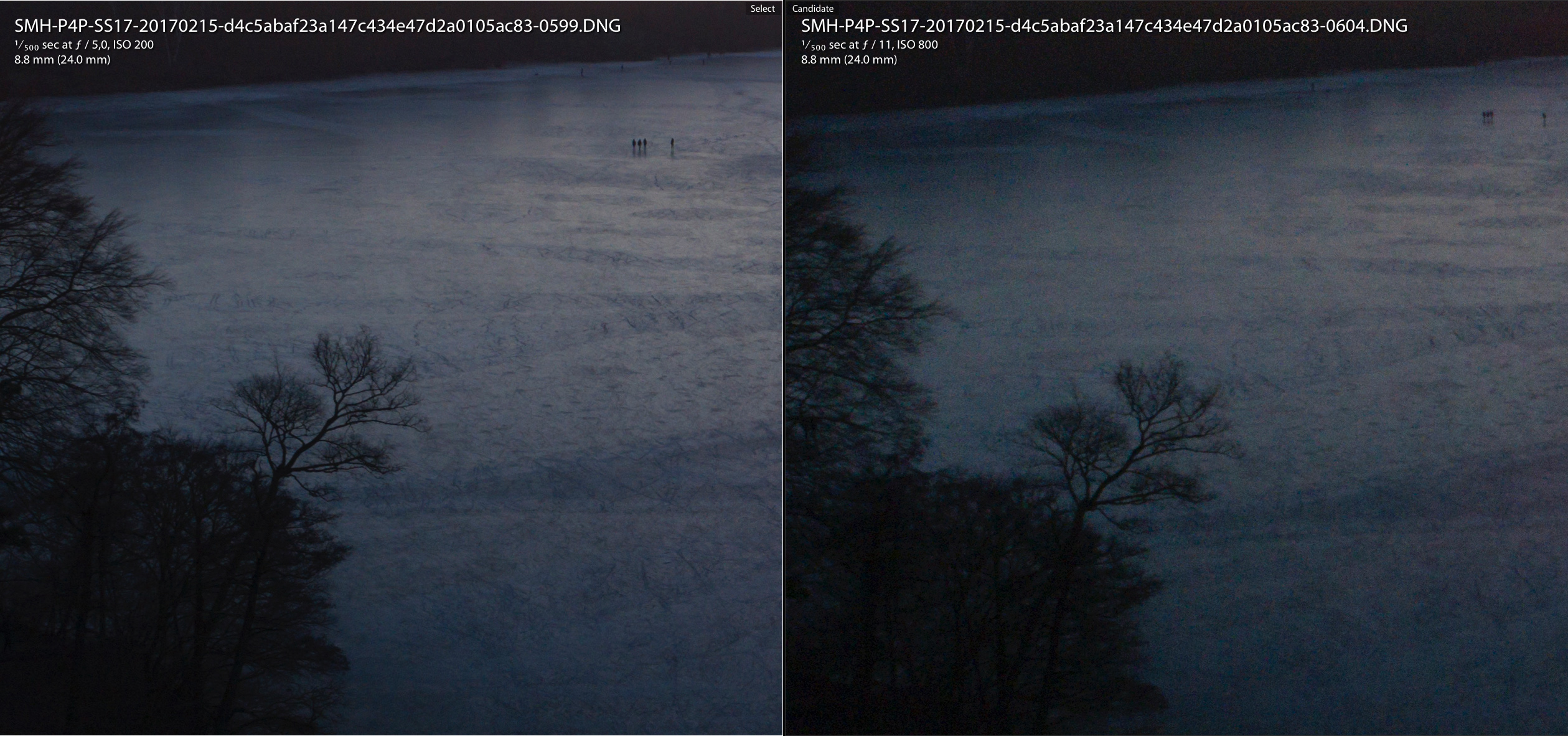 (Open this Image in a new Tab to view in higher resolution)
(Open this Image in a new Tab to view in higher resolution)
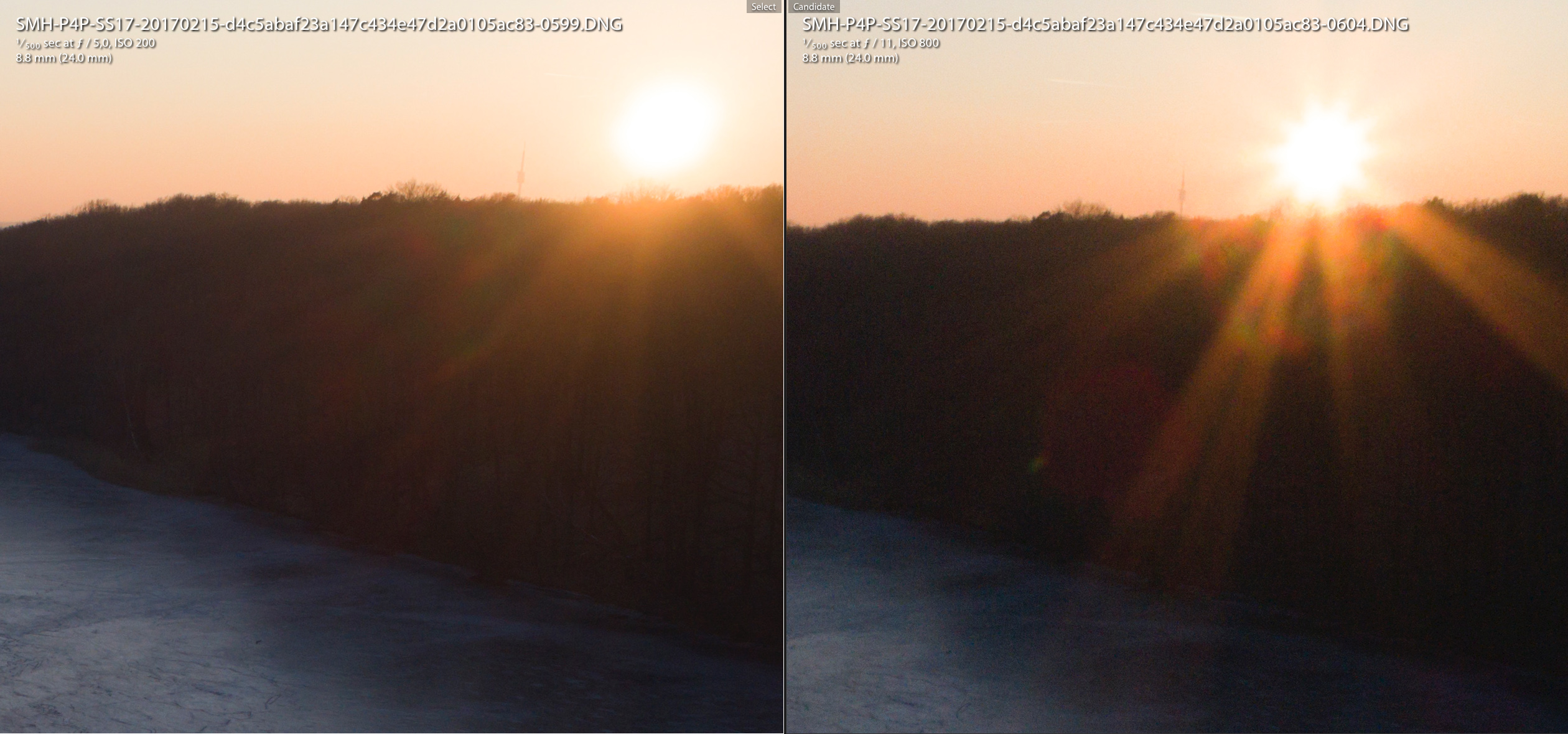
(Open this Image in a new Tab to view in higher resolution)
Image below: unresampled full resolution shot at f11 and 1/8 second with 20MP. This is still ok sharp – the copter seems to stabilize the lens very nicely for these nadir shots – it seems to be possible to use the camera also with very low ISO values when the light levels are low. Stabilisation is just great. Open this file in a new tab to view 5400×3600 full res from the P4Pro:
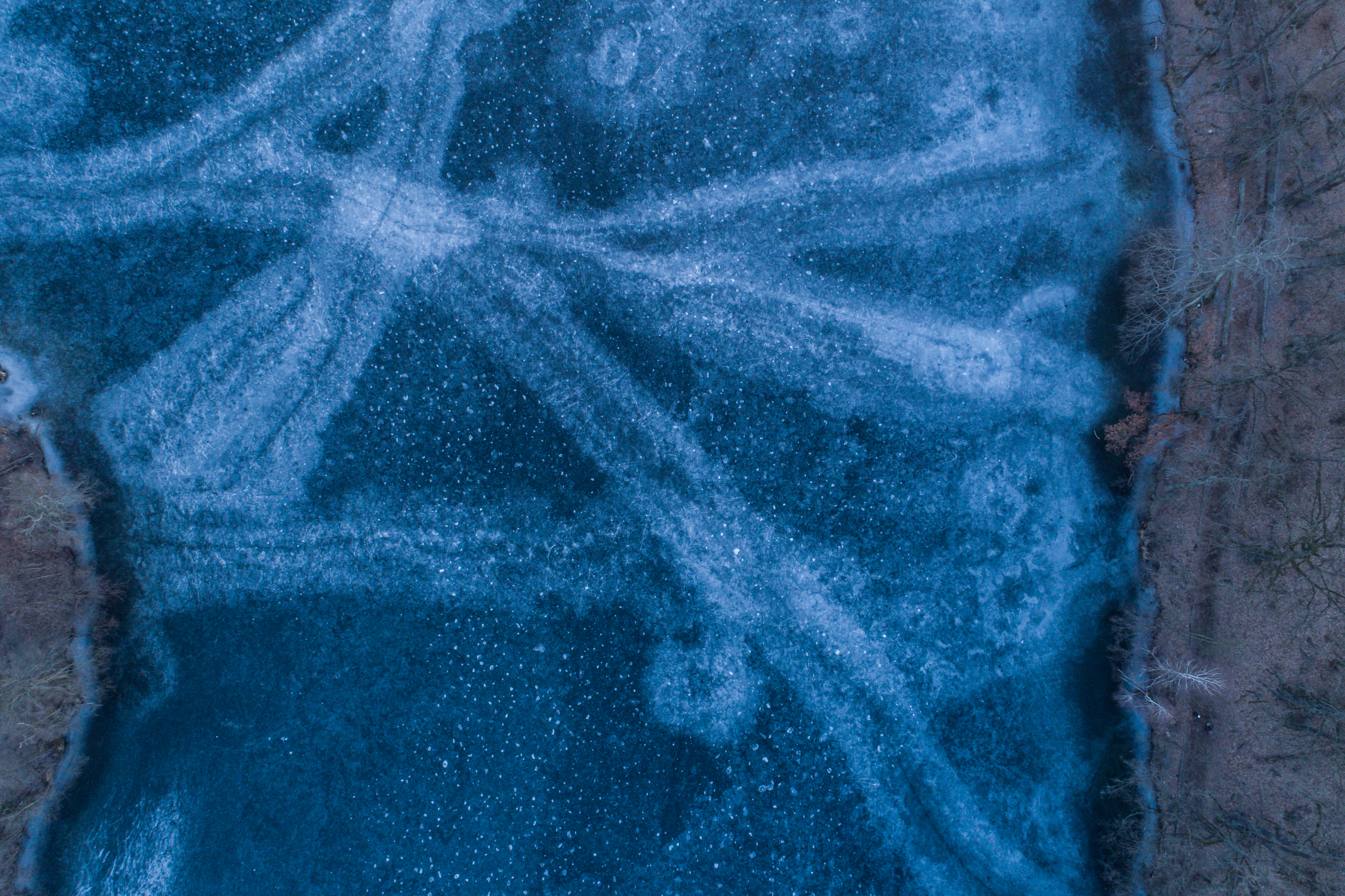
There is a lot of confusion about the speed of MicroSD cards these days and various standards exist. Overall its easy to buy yourself into the wrong card type and for copter data acquisitions with the P4Pro the card speed is essential.
So here we go:
UHS-I and UHS-II (Ultra High Speed Classes):
UHS-II is the newest standard but is not supported by many yet. The Phantom series 3 and 4 all need UHS-I and definitely the fastest UHS-I cards. The UHS-I bus goes to 104MB/s whereas the UHS-II bus goes up to 300MB/s (theoretical limits – the cards will not perform at this speed).
u1-u3 Rating:
UHS Speed classes are subdivided in to u1 and u3, while u3 performs minimum at 30MB/s write speed (needed for copter flights).
Video Rating:
A new speed rating is called “video rating”. It scales from V6 to V90. The fastest cards are v60 right now (possible values are V6 V10 V30 V60 V90, but note that V60 and higher is usually UHS-II bus type and not supported by Phantom 3 and 4 series).
C-Rating (c1-c10)
Speed Rating up to 10MB/s write – this is a slow class rating and c10 should be always possible for fast cards.
SDHC vers SDXC:
Up to 32GB capacity the cards have the label microSDHC whereas cards bigger (64-256GB) hold the label microSDXC.
For the Phantom3A (5MB/s max write speed) Phantom3Pro (60mb/s =7.5MB/s) and Phantom 4Pro (100mb/s=12.5 MB/s) series the fastest at writing to card seems to be right now the UHS-I SanDisk Extrem plus and Extreme pro cards (90MB/s sequential write). While this seems overkill the u3/V30 just certifies that you will never be below 30MB/s write speed under real world / all temperature conditions.
- SanDisk Extreme PLUS microSDXC UHS-I u3 V30
- SanDisk Extreme PRO microSDXC UHS-I u3 V30
Nice summary from Wikipedia goes here:
https://it.wikipedia.org/wiki/MicroSD
